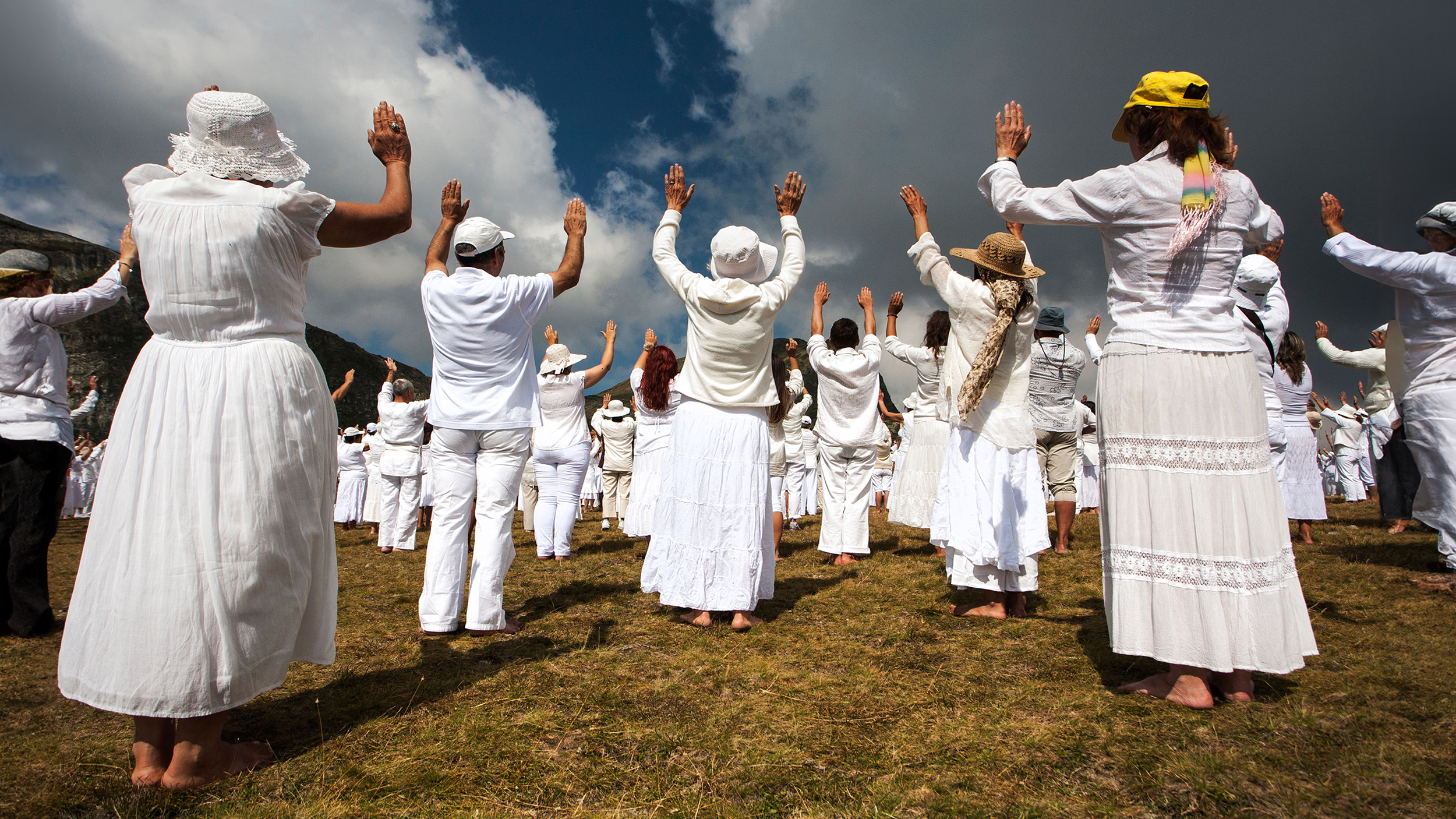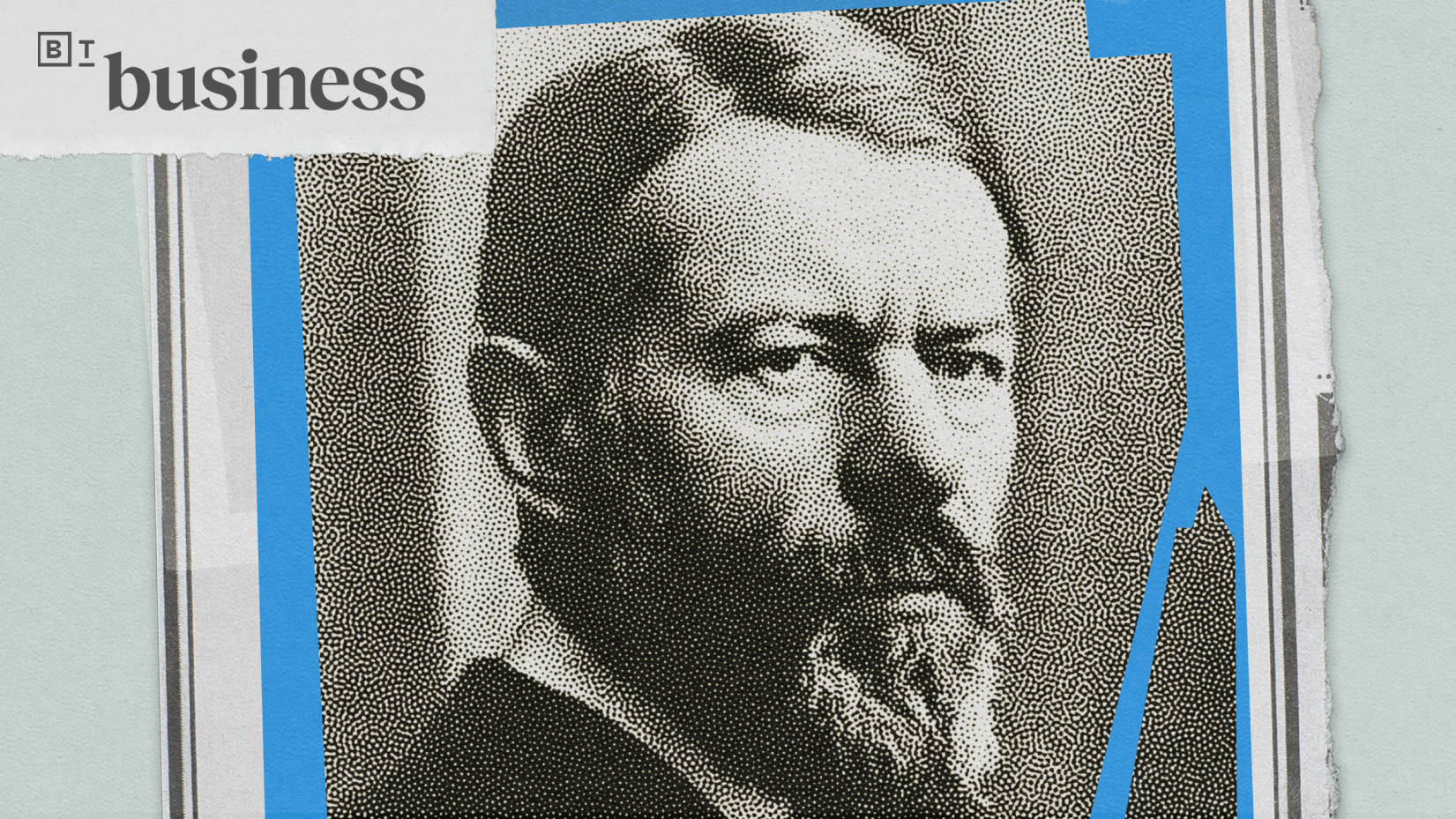How time stopped circling and percolating and started running on tracks

SEBASTIAN KAHNERT/AFP/Getty Images
Reflecting on Albrecht Altdorfer’s painting Alexanderschlacht (1529), or The Battle of Alexander at Issus, the German historian Reinhart Koselleck wrote that, for medieval Europe, time was marked by ‘expectations’ and thus the painting was filled with portents.
When the German poet and critic Friedrich Schlegel (1772-1829) came across Alexanderschlacht in the Louvre nearly three centuries after it was painted, he was dazzled upon ‘sighting this marvel’ but, for him, it contained no deeper significance: it was merely a work of art from a specific historical age. As Koselleck argued, in those three centuries the very idea of ‘time’ had undergone a transformation.
When Altdorfer painted the battle scene, the hurly-burly of everyday life mingled with fears of an imminent end of the world (the eschaton, as the Hebrew Bible calls it). The rise of the Ottoman empire, in particular, was an immediate cause, and the anti-Christ, more theologically, was an omnipresent anxiety. By the early 19th century, time for Europeans was no longer pregnant with an imminent end of the world. Rather, it had begun its 1,000-mile journey from Isaac Newton’s ‘absolute, true and mathematical time’ to the caesium clocks of today.
‘Time’ had become linear and, following the French Revolution of 1789, the future crackled with the promise of utopia. To precipitate this eventuality, post-revolutionary France declared in earnest that the year 1792 would be Year I. Months would now be divided into three ‘decades’ or clusters of 10 days, and days reduced to 10 hours, and each hour into 100 decimal minutes and so on. Then in 1929, the USSR under Stalin abolished the seven-day week and replaced it with a five-day week, with days named as purple, blue, yellow, red and orange. And in 2002, the president of Turkmenistan declared that January would hereafter be known as ‘Turkmenbashi’, after his own official name ‘The Head of the Turkomen’. Time and again, our clocks and calendars have become subservient to the ideological needs of the state.
More fundamentally, as the German historian Jürgen Osterhammel notes in his bookThe Transformation of the World (2009), the democratisation of time – through clocks in town squares and later through the availability of wrist watches – changed how the North Atlantic regions in the 19th century understood their relationship with this proliferation of homogeneous time. But this too posed challenges of its own. In Germany alone, where there were five time standards, it took the valiant campaign of a Prussian field marshal, Helmuth von Moltke the Elder, to persuade the parliament to adopt a single time, with the Greenwich meridian as the referential. As the historian Vanessa Ogle writes in her bookThe Global Transformation of Time (2015): ‘Doing away with the regionalism inherent in keeping five different times was as much an act of national security as of nation-building.’
Outside Europe, much of the world followed an assortment of rules and understandings about what time meant. In India, various Hindu almanacs offered an extraordinarily complex division of time, one ensconced within the other – from microseconds used for rituals to the vast cosmological epochs to describe the Universe and space itself. To the Lakota Indians in the Americas, time included hours born from the movement of the Moon; October to them was ‘the Moon of the Falling Leaves’, as the author Jay Griffiths writes in her bookPip Pip:A Sideways Look at Time (1999). In Burundi, those pitch-black nights when faces could no longer be recognised were described as ‘Who are you?’ nights. In the Islamic world, the first prayer of the day was to be performed when the ‘white thread (light) of dawn appears to be distinct from the black thread (darkness of night)’.
In Rajasthan, there still exists the ‘cow dust hour’ to describe the melancholy of evenings when cattle return from a day’s grazing, awash in a film of dust; Michael Ondaatje describes it in a poem: ‘It is the hour we move small / in the last possibilities of light.’ For the traditional Japanese, the year was divided into 72 microseasons called ‘kō‘ each of which lasts for five days (the days of 16 to 20 March are when ‘caterpillars become butterflies’). These are gradations of time long enough to be memorable but short enough to remind us how fleeting the present is – a time was born from intuitions, from regularities of nature, from injunctions in scripture, and from the needs of agriculture.
By the mid-19th century, the revolution of railroads, connecting distant parts of Europe and the United States, made it clear that cities and towns were all keeping their own time. The larger the country’s geography, the greater the disarray. In North America alone, there were at least 75 time standards. In 1884, thanks to the efforts of the Scottish-Canadian engineer Sandford Fleming, the International Meridian Conference in Washington, DC attempted to rationalise time – for the whole world. There would now be one ‘world time’ with 24 time zones. The political resistance within countries to make any changes to even mechanical aspects of timekeeping was astonishing.
In the colonial world, efforts to standardise time were inseparable from anticolonial sentiments and challenges of bringing together new nationalisms. On 1 December 1881, James Fergusson, the British governor of Bombay, informed the city that from that day onwards: ‘Madras time shall be kept in all offices under the control of Government and shall be held to be the official time for all purposes.’ What was known as Madras time – time followed in the southern coastal city of Madras – was about 40 minutes ahead of Bombay’s local time. An acrimonious campaign followed in newspapers contesting which time to follow where. The Bombay Chamber of Commerce led a campaign to hold a referendum on whether the university clock tower ought to display Madras time or Bombay time. Predictably, Bombay’s residents voted to show Bombay time and, in an effort to impress upon the natives the consequences of flouting orders, the Fergusson administration cut off funds to light the clock at night for the crime of displaying ‘unofficial time’. As Ogle reminds us, it took nearly 44 years after the introduction of the Indian Standard Time in 1906 for the Bombay Municipal Corporation to finally agree to abandon its adherence to Bombay time, and thus bring to an end the now little-remembered ‘Battle of the Clocks’.
By mid-20th century, the standardisation of time was key to postcolonial nation-building. North Korea, for example, has over the past decade switched its time back and forth by half an hour to reflect either estrangement or reconciliation with its cousin in the South. By contrast, India – which spans over 3,000 kilometres, and thus different parts of the country experience sunrise with nearly two-hour differences – has stoically refused to enact more than one time zone. In a recent paper, the economist Maulik Jagnani argued that an hour’s delay in average sunset time reduces children’s education by 0.8 years, due to lack of sleep and early school hours. He estimates that, by going from one to two time zones, the human capital gains could be around $4.2 billion.
Amid all this commingling of time mediated by reason, history and the state, the human experience of the present continues to belie easy categorisations. As the Greek philosopher Heraclitus reminds us: ‘You can not step twice into the same river.’ More than a millennium later, St Augustine grappled with time in a more personal, even confessional manner: he knew what time was but, when he tried to describe it, he could not. Another millennium passed, and the French philosopher Michel Serres wrote that ‘time doesn’t flow, it percolates’. Time, to Serres, was no longer a freeflowing stream but rather a coagulant that partially makes its way through the sieve of the human mind as a witness to our wobbly self-assertions that this moment is like no other, as well as a cause of our innermost dread that we are condemned to relive the present.
The ever-watchful gaze of the algorithms run by the state, corporations and technologies that document all our actions seem to bet on this conceit – given enough time under observation, their learning algorithms will have us figured. Time becomes the fire in which the steel of surveillance is sharpened. Amid all these vast imperious forces jostling to govern and influence us, we live our lives as if we are immortal. The occasional quests of freedoms we embark upon to recover our elusive selves remains our only way of attesting to our presence on this Earth. All the rest, we know deep within, will eventually surrender to time.![]()
This article was originally published at Aeon and has been republished under Creative Commons. Read the original article.





